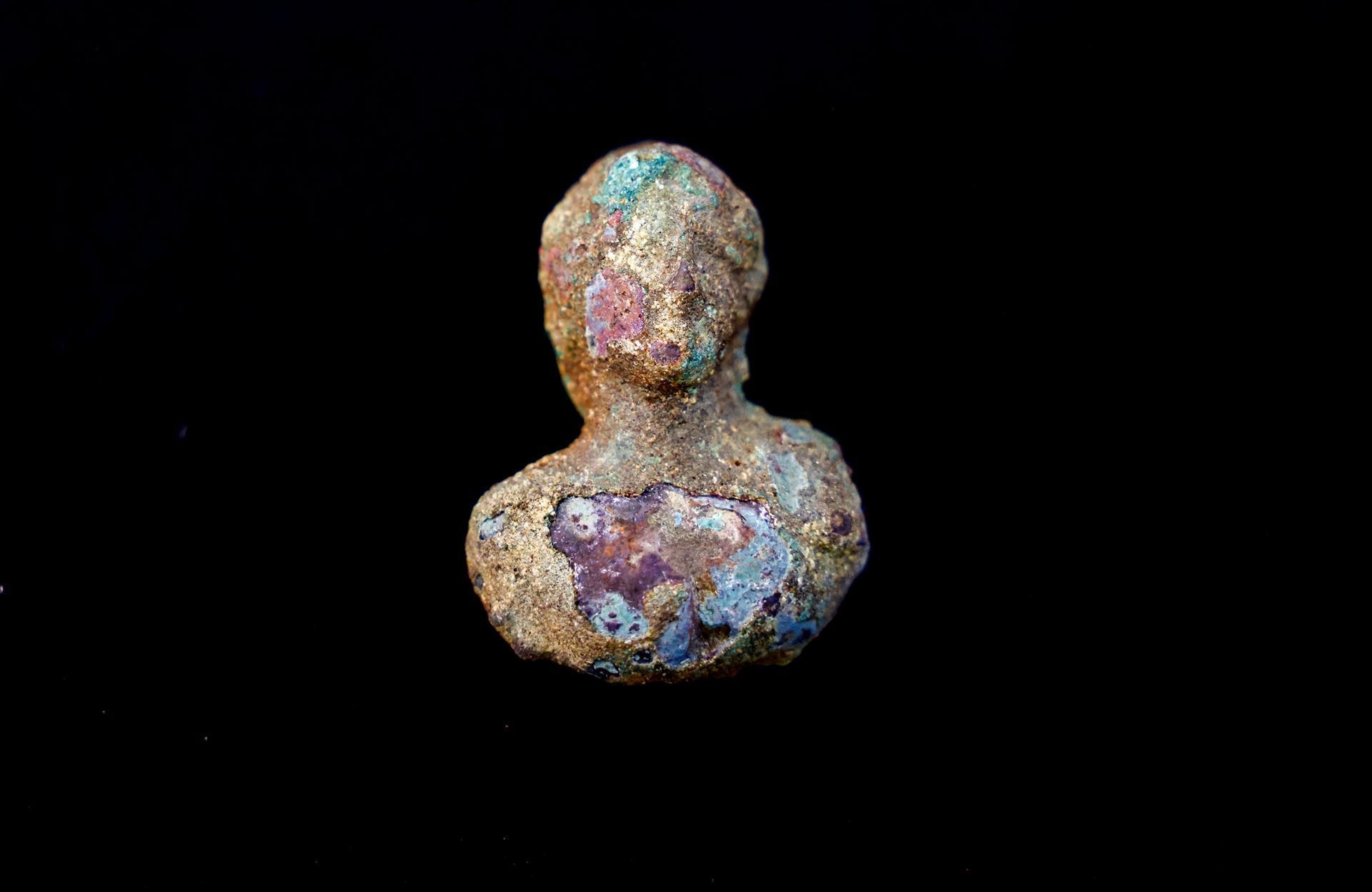
The Israel Antiquities Authority (IAA) announced on Dec. 22 the discovery of remnants of two shipwrecks off the Mediterranean coast, replete with a sunken trove of hundreds Roman and medieval silver coins.
The finds made near the ancient city of Caesarea, which was the local capital of the Roman empire in the 3rd century and its port was a key hub for Rome’s activity, were dated to the Roman and Mamluk periods, around 1,700 and 600 years ago, archaeologists said.
They include hundreds of Roman silver and bronze coins dating to the mid-third century, as well as more than 500 silver coins from the Middle Ages found amid the sediment.
They were found during an underwater survey conducted by the IAA’s Marine Archaeology Unit in the past two months, said Jacob Sharvit, head of the unit.
Among the other artifacts recovered from the site near the ancient city of Caesarea were figurines, bells, ceramics, and metal artifacts that once belonged to the ships, such as nails and a shattered iron anchor.
The IAA made its announcement just days ahead of Christmas, and underscored the discovery of a Roman gold ring, its green gemstone carved with the figure of a shepherd carrying a sheep on his shoulders.
Robert Kool, head of the authority’s coin department, called the item “exceptional.”
“On the gemstone is engraved an image of the ‘Good Shepherd,’ which is really one of the earliest symbols of Christianity,” he said.
Sharvit said that the Roman ship is believed to have originally hailed from Italy, based on the style of some of the artifacts. He said it remained unclear whether any remnants of the wooden ships remained intact beneath the sands.
Ring with Christian symbol
A Roman-era golden ring with an early Christian symbol for Jesus inscribed in its gemstone was among the finds.
The thick octagonal gold ring with its green gemstone bore the figure of the “Good Shepherd” in the form of a young shepherd boy in a tunic with a ram or sheep across his shoulders.
A red gemstone with a carving of a lyre was also found in the relatively shallow waters.
According to Helena Sokolov, a curator at the IAA’s coin department who researched the Good Shepherd ring.
Sokolov said that while the image exists in early Christian symbolism, representing Jesus as a caring shepherd, tending to his flock and guiding those in need, finding it on a ring was rare.
The presence of such a symbol on a ring probably owned by a Roman operating in or around Caesarea made sense, given the ethnically and religiously heterogenous nature of the port in the third century, when it was one of Christianity’s earliest centers.
“This was a period when Christianity was just in its beginning, but definitely growing and developing, especially in mixed cities like Caesarea,” she told AFP, noting the ring itself was small, implying that it may have belonged to a woman.
And while Christianity was being practiced in “underground” forums at the time, she said the Roman empire was relatively tolerant of new forms of worship including around Jesus, making it reasonable for a wealthy citizen of the empire to wear such a ring.